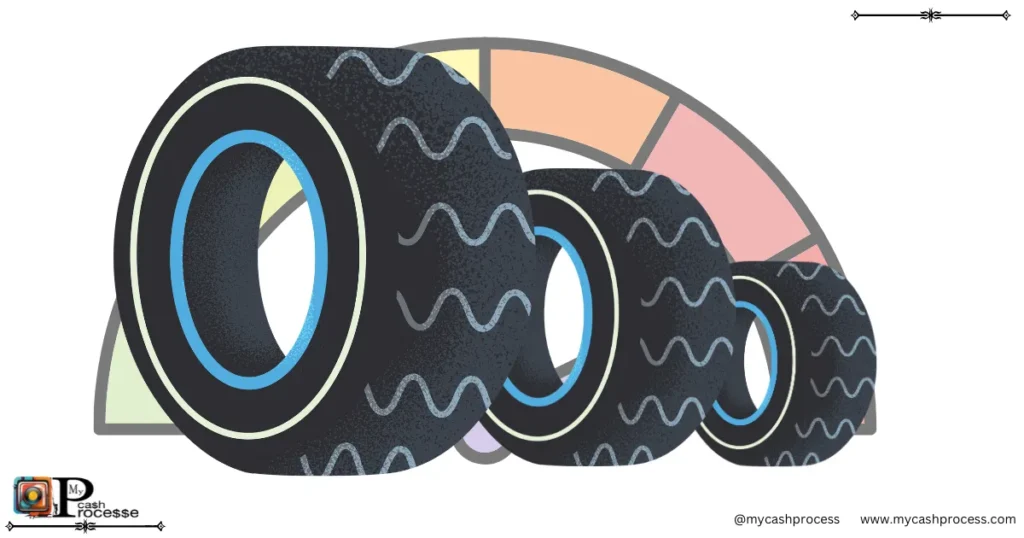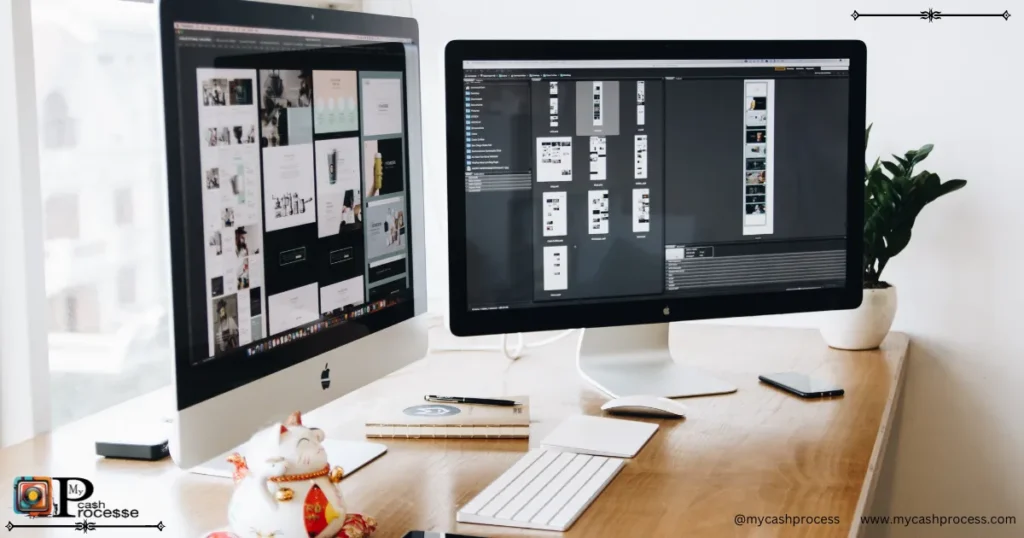Introduction
In the world of web design, ensuring that a website is accessible, visually appealing, and functional across multiple devices is crucial. This involves adapting your website’s design for various screen sizes and devices, a process known as “responsive design.” One of the most important aspects of responsive design is understanding the role of breakpoints—specific points at which your website’s layout adjusts based on the user’s screen size. But how do we apply the concept of breakpoints in a way that is both practical and user-friendly?
In this article, we’ll explore the concept of website sizing for different devices through a unique analogy: a website for understanding tire sizing. This analogy helps break down the complexities of responsive design, making it easier for designers to visualize how their sites will adapt and improve the user experience. We will also explore a variety of design strategies, tools, and techniques that will empower you to create websites that work seamlessly across all platforms.
Full Article Navigation
Understanding the Role of Breakpoints in Website Sizing
The key to responsive design lies in the concept of breakpoints. Breakpoints are defined as the widths at which a website’s layout changes to accommodate different screen sizes. In other words, breakpoints tell the website how to adjust the layout so it is optimized for desktop, tablet, or mobile devices.
For example, consider how a bra sizing website adjusts its display based on a user’s selection of size. The website might display larger images or text on a desktop, whereas a more condensed version of the same site will show up on a mobile device with simpler navigation.
In website sizing, breakpoints often range from small mobile screens (320px or smaller) to larger screens (such as 1920px or wider). Implementing these breakpoints in CSS allows for flexible layouts that enhance the user experience across all devices. Sizing website design for different breakpoints ensures your content doesn’t look awkward or difficult to navigate, regardless of screen size.
By carefully planning your breakpoints, you can ensure your website’s layout looks fantastic no matter what device the user is using. A well-executed breakpoint strategy can significantly improve the performance of your website, reducing bounce rates and increasing user engagement.
A Website for Understanding Tire Sizing: Analogies That Help Optimize Your Web Design
Understanding how a tire fits on a vehicle can provide valuable insights into designing flexible, responsive websites. Think of a website for understanding tire sizing: the tire must fit the wheel well, no matter the size or shape of the car. Similarly, your website must “fit” every user’s screen size while maintaining functionality and visual appeal.
Just like how tires come in different sizes to fit various vehicles, web designs must adapt to different screen sizes and breakpoints. The idea is to ensure that elements on the website (such as text, images, buttons, and navigation menus) adjust properly depending on the device the website is being viewed on.
For instance, when you select a tire for a car, you are presented with an option that best fits your car’s specifications. Similarly, on a bra sizing website, the content dynamically adjusts based on the chosen size to give an optimal viewing experience. Applying these principles to website sizing for different breakpoints ensures that your site “fits” the needs of its users.
Why Sizing Website Design for Different Breakpoints Enhances User Experience
Website design is not just about aesthetics; it’s about ensuring an intuitive, seamless experience for users. By using website sizing techniques and adjusting designs based on different breakpoints, you improve the usability of your website on every device.
For example, when visitors access your website on a mobile device, they expect a different layout than when they visit from a desktop. If your website doesn’t adapt to these different screen sizes, users may experience frustration with cramped layouts or hard-to-read content. However, sizing website design for different breakpoints ensures that your website will reformat appropriately, improving readability, navigation, and overall user satisfaction.
When you implement responsive design, you also increase the likelihood of users engaging with your site longer, completing their goals, and coming back. A smooth, responsive design is particularly important for e-commerce sites, where potential customers may abandon their carts due to poor navigation.

Responsive Design: Best Practices for Website Sizing Across Multiple Platforms
Responsive design is about making sure your website looks great on every screen size, from a tiny smartphone to a massive desktop monitor. To ensure that your website sizing works across multiple platforms, here are some best practices to follow:
- Use Fluid Layouts: Instead of using fixed-width elements, use percentage-based widths that adapt to screen sizes. This ensures that your website’s design scales seamlessly.
- CSS Media Queries: Media queries allow designers to apply specific styles depending on the user’s device characteristics, such as screen width or resolution.
- Flexible Images and Media: Images should scale according to the device’s screen size, so they don’t appear distorted or out of proportion. Techniques such as the
max-width: 100%rule allows images to resize fluidly. - Mobile-First Design: Start by designing for mobile and progressively enhance the design for larger screens. This helps prioritize speed and mobile-friendliness.
- Viewport Meta Tags: The viewport meta tag is essential for controlling how your website is scaled on mobile devices.
By following these best practices, you ensure that your website remains functional, accessible, and user-friendly on all screen sizes, leading to a better overall experience for your audience.
Using a Website Sizing Guide: Key Principles for Designing Seamless User Journeys
A website sizing guide is an invaluable tool for designers, helping them to create a consistent, well-proportioned layout that is easy to use across all devices. When designing responsive websites, the sizing guide is used to establish standards for layout dimensions, font sizes, and element spacing.
This guide helps designers maintain uniformity while building flexible websites. A sizing guide also ensures that breakpoints are defined early in the design process, streamlining decision-making throughout the project.
The guide should include elements such as:
- Recommended Breakpoints: Suggested screen widths to define when the layout should change.
- Typography Guidelines: Ensuring text is legible across all devices by adjusting font sizes and line heights.
- Navigation Design: Designing navigation menus that work for both mobile and desktop views.
- Consistency in Elements: Ensuring buttons, icons, and other UI elements are proportionate to the screen size.
By adhering to a website sizing guide, you can create websites that offer a smooth, intuitive journey for users on any device.
Lessons from Bra Sizing Websites: Scaling Website Design to Fit Every Device
Just as bra sizing websites tailor their designs to accommodate various sizes and measurements, website designers must ensure that their sites adjust to fit every user’s device and needs. Whether you’re buying a bra or shopping for tires, the process of selecting the right size depends on careful attention to detail and accurate sizing.
Bra sizing websites present a unique challenge—balancing the need to show detailed product information while ensuring the layout remains simple and easy to navigate. Similarly, web designers need to create layouts that are clean, functional, and aesthetically pleasing, regardless of the device.
For designers, there are key takeaways from bra sizing websites:
- Personalization: Designing for users’ needs, similar to how bra sizing websites offer filters for specific measurements, helps improve user satisfaction.
- Clear and Simple Navigation: Ensuring that your website’s content is easily navigable, especially on smaller devices, can greatly improve the user journey.
- Adaptability: Just as bra sizing websites adjust to fit specific measurements, your website should adjust to users’ screen sizes with ease, creating a responsive experience.
By implementing these strategies, you can ensure your web design is not only functional but also user-centric, providing the best possible experience across devices.
Advanced Features for Enhancing Bra Sizing Website Functionality
Integration of Interactive Tools
Interactive features can significantly enhance the user experience of a bra sizing website, making it a go-to platform for accurate and personalized results.
- Bra Size Calculators:
These calculators let users input their measurements (e.g., band size, cup size) to receive instant sizing recommendations. Advanced calculators can also accommodate variations for different brands or styles, providing a highly tailored experience. - Live Chat Support:
Implement AI-driven chatbots or live customer support to address sizing concerns in real time. These tools ensure users feel supported throughout their sizing journey, increasing trust in your platform.
Personalization Options
Personalization fosters user engagement and retention by tailoring the experience to individual preferences.
- User Profiles:
Offer options for users to create accounts where they can save past measurements, track purchases, and access exclusive recommendations. This is particularly helpful for returning visitors who want to revisit their sizing history. - Recommendations:
Use machine learning algorithms to analyze user activity and suggest bras or related products that align with their sizing and style preferences.
Designing Intuitive Navigation for a Bra Sizing Website
Simplifying the User Journey
Efficient navigation ensures users can access the information they need without frustration.
- Clear Menus:
Design navigation menus with intuitive labels such as “How to Measure,” “Fit Guide,” and “Size Chart.” Group related content under these headers to reduce cognitive load. - Breadcrumb Trails:
Breadcrumbs help users track their location within the site, enabling easy backtracking. This feature is especially useful for users exploring multiple pages within your size guide or product catalog.
Enhancing Search Functionality
A robust search function ensures users can quickly find specific information or products.
- Search Bar Features:
Include auto-suggestions, spelling corrections, and filters for search results. For instance, users searching “sports bra size” can filter results by activity level or brand. - Content Categorization:
Organize your content into distinct categories like “Size Charts by Brand,” “Common Fitting Issues,” and “Measurement Tutorials.” This structure allows users to locate resources quickly.
Importance of Accessibility in Bra Sizing Websites
Compliance with Accessibility Standards
Creating an inclusive website is not just ethical but essential for reaching a broader audience.
- WCAG Guidelines:
Follow Web Content Accessibility Guidelines (WCAG) to ensure all users, including those with disabilities, can navigate your site. This includes ensuring sufficient contrast ratios for text, providing alternative text for images, and enabling keyboard navigation. - Screen Reader Compatibility:
Ensure that every element of your site, from buttons to bra size calculators, is fully compatible with screen readers. This helps visually impaired users access your services effortlessly.
Inclusive Design Features
Inclusivity can make your website stand out by catering to users with diverse needs.
- Language Options:
Provide multilingual support to make your content accessible to users worldwide. Language settings can be integrated into the header or footer for easy toggling. - Dynamic Font Resizing:
Include a font resizing tool that lets users adjust text size based on their preferences. This feature is particularly beneficial for users with visual impairments.
Leveraging Analytics to Improve a Bra Sizing Website
Tracking User Behavior
Analytics offer valuable insights into how users interact with your website.
- Heatmaps:
Use heatmaps to identify the areas of your website that receive the most clicks and engagement. For example, if the “How to Measure” page is highly visited, consider expanding its content. - Session Recordings:
Tools like Hotjar or FullStory allow you to watch session recordings of users navigating your site. This helps identify pain points, such as confusing navigation or slow-loading pages.
Analyzing Performance Metrics
Regularly evaluating key performance indicators ensures your website continues to meet user expectations.
- Bounce Rate:
A high bounce rate might indicate poor design, irrelevant content, or technical issues. Use this metric to identify pages that need improvement. - Conversion Tracking:
Set up goals in analytics platforms to track how many users complete desired actions, such as using a sizing calculator or purchasing a product. This helps measure the effectiveness of your design and features.
The Role of Content Strategy in a Bra Sizing Website
Creating Engaging Content
Well-crafted content can establish your website as an authoritative resource in the industry.
- Blogs and Guides:
Publish articles on topics like “Common Bra Sizing Mistakes” or “How to Choose the Right Bra for Your Body Type.” These pieces can educate users and drive organic traffic through targeted SEO. - Video Tutorials:
Videos are a highly engaging way to demonstrate the measuring process or explain complex sizing concepts. Host these videos on platforms like YouTube and embed them on your site to enhance content accessibility.
Implementing SEO Best Practices
SEO is crucial for driving traffic and ensuring your website ranks high on search engines.
- Keyword Placement:
Incorporate terms like “bra sizing website” and “website sizing guide” naturally within headers, subheaders, and body text to optimize for search engines without compromising readability. - Meta Descriptions:
Write compelling meta descriptions for each page to increase click-through rates from search engine results. For instance, “Learn how to find the perfect fit with our expert bra sizing guide, complete with tools and tips for every body type.”
Follow us on Pinterest, Twitter X, Facebook, Instagram, Quora, TikTok, Discord, YouTube, and WhatsApp Channel.
Conclusion
Responsive web design is an essential part of modern web development. By understanding the role of breakpoints and applying principles from unique analogies such as a website for understanding tire sizing or bra sizing websites, designers can create websites that offer a seamless, user-friendly experience across all platforms. Whether you’re designing for desktop, tablet, or mobile, taking a strategic approach to website sizing ensures that your website will adapt beautifully to every screen size, enhancing user satisfaction and engagement.



